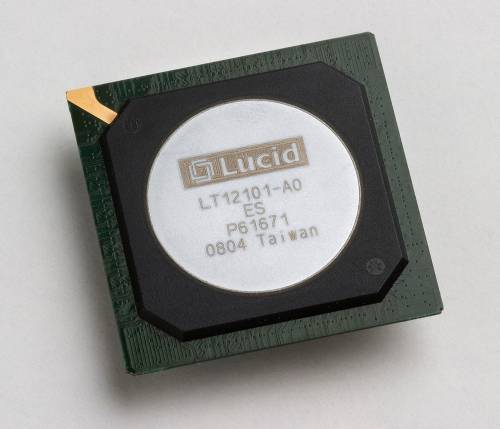- Qualcomm Launches Snapdragon 4 Gen 2 Mobile Platform
- AMD Launches Ryzen PRO 7000 Series Mobile & Desktop Platform
- Intel Launches Sleek Single-Slot Arc Pro A60 Workstation Graphics Card
- NVIDIA Announces Latest Ada Lovelace Additions: GeForce RTX 4060 Ti & RTX 4060
- Maxon Redshift With AMD Radeon GPU Rendering Support Now Available
Lucid HYDRA Engine Multi-GPU Technology

One of the more exciting third-party demonstrations we saw at Intel’s 2008 Developer Forum was by a little-known company called Lucid, who promises highly-efficient multi-GPU performance scaling via their unique “Hydra Engine” technology. We take a look at Hydra Engine, and what it means for ATI’s Crossfire and NVIDIA’s SLI.
Page 3 – Final Thoughts
It takes quite a bit to excite us these days as PC hardware enthusiasts, with Intel’s newest CPU microarchitecture right around the corner, and multi-GPU video cards already blowing our minds with the performance that they manage to put up on current- and next-generation games. Yet Offir and the others at Lucid have managed to accomplish just that, simply by the ingenious solution they’ve come up with to solve the present problems with multi-GPU performance scaling.
But being enthusiastic about the technology is one thing – the company’s actual ability to make the technology a success is quite another. As far as pricing is concerned, in an era of $400 enthusiast motherboards (ASUS Rampage Extreme, anyone?), Lucid assures us that their hardware is extremely cost-effective, and won’t cause much of an increase in the bill of materials – which means that aside from any ‘exclusivity tax’ that HYDRA-equipped motherboards incur upon their manufacturers’ whim, Lucid’s technology is well within the realm of affordability for enthusiasts and gamers.
There are a few questions we wish we’d asked during the demonstration of HYDRA technology. First of all is with regard to antialiasing – does the HYDRA Engine send the entire frame to one of the installed GPUs to handle the full-frame antialiasing task? Does it optimize the handling of the antialiasing task by dispatching it to the GPU with the least load? What about other post-processing effects like HDR? Do these incur a performance penalty when enabled? Does Lucid presently have any manufacturing partners lined up?

We heard a couple of major names dropped, but as far as we know, nothing has yet been set in stone. Also, while Lucid doesn’t have any current plans to take the HYDRA Engine completely into software, there’s no telling what the future may hold, or what steps Lucid may need to take to stay competitive.
There are a few more things we do know, however, besides what we’ve already covered. First of all, though the HYDRA 100 ASIC only incorporates a single 16x upstream PCI Express port, today’s graphics cards don’t even come close to exhausting the HYDRA 100’s available bandwidth across that solitary 16-lane interface, even in quad-card arrangements.
Secondly, GPGPU processing won’t get a boost from HYDRA, which only handles machine-language calls from the graphics driver for 3D rendering tasks. Also, while Lucid’s current HYDRA hardware is DirectX 10.1 compliant, the software implementation, for the moment, is not. But we’re assured that’s coming ‘very soon’. Lastly, multi-monitor arrangements aren’t outside the realm of possibility.
In the end, there remains much about Lucid’s HYDRA Engine that we won’t know until we’ve got HYDRA-equipped hardware in-hand, but we do know this much: SLI and Crossfire have found a formidable new competitor. At the very least, Lucid’s HYDRA Engine technology should be enough to slap the major players around a little and make them look silly until they can come up with some way to fix Crossfire and SLI to resolve the performance scaling issues that plague both multi-GPU solutions, without infringing upon Lucid’s patents.
If they do manage to do this, we’re not sure where this would leave Lucid, but we’re certain that our Israeli friends will have plenty of time to shake up the 3D graphics marketplace until the big guys can get their rears in gear.
Discuss in our forums!
If you have a comment you wish to make on this article, feel free to head on into our forums! There is no need to register in order to reply to such threads.
Support our efforts! With ad revenue at an all-time low for written websites, we're relying more than ever on reader support to help us continue putting so much effort into this type of content. You can support us by becoming a Patron, or by using our Amazon shopping affiliate links listed through our articles. Thanks for your support!





